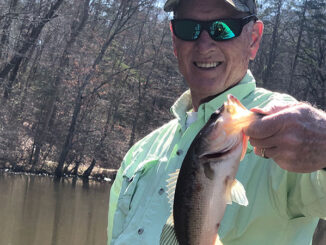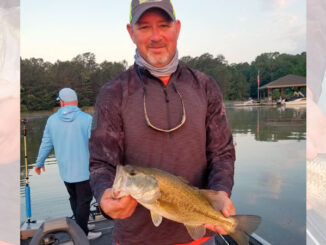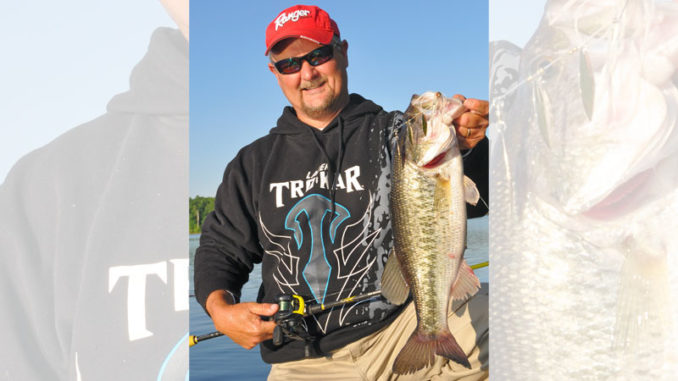
You don’t have to fish deep; bass at Shearon Harris don’t mind getting shallow in the winter, if conditions are just right. Here’s how to catch them.
By late December and January, water temperatures in many of North Carolina freshwater lakes usually drop to 50 degrees and lower, causing largemouth bass to become sluggish.
Conventional wisdom says anglers should fish for winter bass in deeper — and slightly warmer — water, but Jeff Thomas, a guide and former tournament pro, takes the opposite approach on Shearon Harris Lake, which is just 30 minutes from his home in Broadway, N.C.,
“The weather lightens fishing pressure at Harris, but I like that,” Thomas said. “If you know where to fish and what to use, you sometimes can find bass stacked up. I’ve caught as many as 15 or 20 (bass) in a day at two or three spots.
“December and January often are more like late fall than winter. I’ve even caught bass when there’s skim ice at the backs of coves and creeks.”
Most serious chub chasers think of January as a time to drop lures 25- to 30-feet deep, using their depth finders to reveal bottom structure, bait schools and bass.

Not Thomas.
“I can get to Jordan, Falls (of the Neuse) or Harris pretty quick, but I’d rather go to Harris because it’s got shoreline cover that’s a little shallower. Also at Harris, you also don’t have to worry about muddy water. In January, the water’s clear.”
Corey Oakley, a regional fisheries biologist for the N.C. Wildlife Resources commission, once described Shearon Harris this way: “Shearon Harris is more like a large farm pond.”
Thomas fishes it that way. Instead of jigging a spoon or slow-rolling a spinnerbait through deep water, he heads “to the backs of coves where it’s shallow and there’s dormant vegetation. You almost could call it a spring pattern.”
However, the lake’s shoreline habitat has changed, he said.
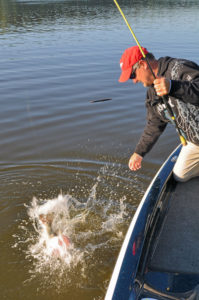
“(Duke Energy) has gotten rid of most of the milfoil and hydrilla,” he said. “About the only (aquatic vegetation) left is primrose. And that doesn’t (green up) until spring.”
But Thomas still targets shallow water with decaying vegetation because it provides almost all the lake’s remaining cover.
“I like to throw little flat-sided crankbaits, such as a No. 5 Shad Rap, near the edges,” he said. “Best colors are ghost, white or natural-shad color. The only thing they have got to have is a chartreuse back.
“Typically, I look for water that’s above 46 or 47 degrees in January. Any lower and bass won’t bite.
“The main thing is to fish those crankbaits really slow in the backs of pockets and coves or around shorelines that are crusted over (with ice). I throw crankbaits up on the ice, bring them off and fish them slow.”
The smaller the crankbait, the better.
“They’re 2½ or 3 inches long,” Thomas said. “Any little flat-sided crankbait (that) dives 5 feet max, with a subtle movement, is good. I don’t use crankbaits with square bills.
“Most shad die off by January, so a bass will jump on any shad-type bait, especially a small one. I like them because they let you fish a lot of places and move until you find a bite.”
However, when warm fronts produce two or three days of warmer weather in December and January, bass activity changes.
“You can be sure I’ll be at Harris then,” he said. “You don’t have to go early; there’s no point to get there at the crack of dawn. You can wait until it warms up, maybe 9 or 10 a.m.”
With skim ice evaporated, he’ll often throw jerkbaits using a 6½-foot, medium-heavy rod spooled with 10-pound monofilament.
“I like a (Megabass) 110 jerkbait without a deep-diving bill,” Thomas said. That bait is 4 to 41/3 inches long and tracks 4- to 10-feet deep.
“If we get two-straight warm, sunny days, sometimes I throw Senkos at dead shoreline grass, too,” Thomas said. “I fish the sunny (northwest) side of the lake. If the sun’s been out a couple days and the temperature is in the upper 50s, you may hit a pocket that’s loaded with bass.”
Zero Gravity jig is secret weapon
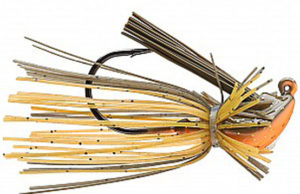
Although some anglers like to fish jigs, spoons or spinnerbaits in deep water during the winter, bass pro and guide Jeff Thomas prefers a springtime tactic at Shearon Harris Lake.
He often chooses flat-sided crankbaits, jerkbaits or Senkos in the backs of coves or cuts, even those with thin, ice-covered dead vegetation.
But when warm fronts sweep into central North Carolina, stay for a couple of days and raises the water temperature above 50, it often steps up the bite another notch.
“My philosophy is I’m fishing shallow because there’s only one reason a bass is there in winter: he wants to eat,” Thomas said. “If I find feeding bass in winter, they usually won’t be large, even though Harris is known for hawgs. You might catch a quality 6- or 7-pounder, but rarely a huge one. That happens more in early spring through early summer, February through June.
“If it’s winter though, with a nice warm snap, sometimes big bass will move up in shallow water with smaller bass. And big bass like big baits.”
Thomas takes advantage with a little-known lure, the Zero Gravity jig, designed by a veteran North Carolina lure-maker, Kelly Barefoot of Raleigh’s Catch Outdoors.
“It looks like a lead-weighted jig, maybe 1/2-ounce — but it weighs nothing (actually, .21 ounces),” Thomas said. “On a warm, winter day, I’ll throw it on top of primrose at Harris and let it fall off the edge. Big bass can’t resist it.”
“It’s so light, it takes 3 seconds to fall a foot. And that’s what you need in winter: a slow-falling lure. It’s bulky, has a big profile and looks like a jig. It’s perfect for bass that aren’t gonna chase a small meal in cold water.”
Thomas said he likes to use a black/blue Zoom Super Chunk as a trailer, although some anglers use a Senko.
Destination Information
HOW TO GET THERE — Shearon Harris lake is south of Raleigh, N.C., and north of Sanford, just off US 1. Along with US 64, US 1 is the primary access to the 4,100-acre lake, which has two public boat ramps: Crosspoint off Crosspoint Road and Holleman’s Landing on Bartley-Holleman Road east of US 1.
BEST TECHNIQUES — Use medium-action baitcasting rods with 7:1 ratio reels spooled with 10-pound monofilament. Fish flat-sided crankbaits in light colors to match clear water, weightless Senkos of Zero Gravity jigs or Megabass 110 jerkbaits. Go to the backs of coves or creeks and pull lures off shallow banks with grass, then work them back slowly. The best surface water temperatures are 47 to 56 degrees. Best water temps 47 to 56 degrees.
FISHING INFO/GUIDES — Jeff Thomas, 919-770-4654.
ACCOMMODATIONS — Comfort Inn, Sanford, 919-842-5600; Days Inn, Sanford, 919-776-3150; Hampton Inn, Sanford, 919-775-2000; Comfort Inn, Fuquay-Varina, 919-557-9000; Quality Inn, Fuquay-Varina, 919-557-2009.
MAPS — DeLorme North Carolina Atlas & Gazetteer, 207-846-7000, www.delorme.com. Fishing HopSpots Maps, 800-ALL-MAPS, www.fishinghotspots.com.

